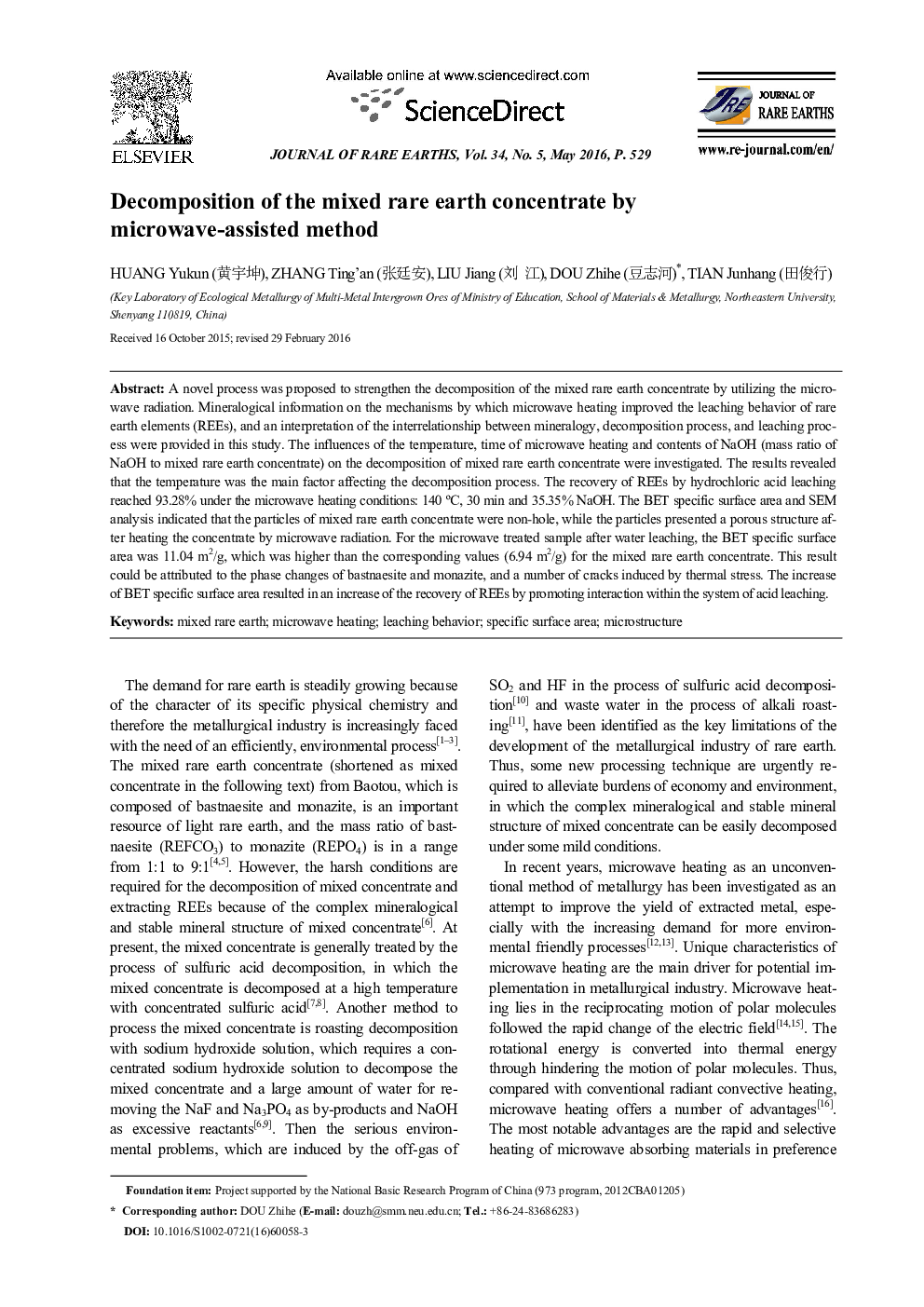| Article ID | Journal | Published Year | Pages | File Type |
|---|---|---|---|---|
| 1259684 | Journal of Rare Earths | 2016 | 7 Pages |
A novel process was proposed to strengthen the decomposition of the mixed rare earth concentrate by utilizing the microwave radiation. Mineralogical information on the mechanisms by which microwave heating improved the leaching behavior of rare earth elements (REEs), and an interpretation of the interrelationship between mineralogy, decomposition process, and leaching process were provided in this study. The influences of the temperature, time of microwave heating and contents of NaOH (mass ratio of NaOH to mixed rare earth concentrate) on the decomposition of mixed rare earth concentrate were investigated. The results revealed that the temperature was the main factor affecting the decomposition process. The recovery of REEs by hydrochloric acid leaching reached 93.28% under the microwave heating conditions: 140 °C, 30 min and 35.35% NaOH. The BET specific surface area and SEM analysis indicated that the particles of mixed rare earth concentrate were non-hole, while the particles presented a porous structure after heating the concentrate by microwave radiation. For the microwave treated sample after water leaching, the BET specific surface area was 11.04 m2/g, which was higher than the corresponding values (6.94 m2/g) for the mixed rare earth concentrate. This result could be attributed to the phase changes of bastnaesite and monazite, and a number of cracks induced by thermal stress. The increase of BET specific surface area resulted in an increase of the recovery of REEs by promoting interaction within the system of acid leaching.
Graphical AbstractLow pressure N2 adsorption-desorption isotherms of samples ((1) the mixed concentrate; (2) the sample after microwave heating; (3) the sample after heating by microwave and leaching by water)Figure optionsDownload full-size imageDownload as PowerPoint slide
